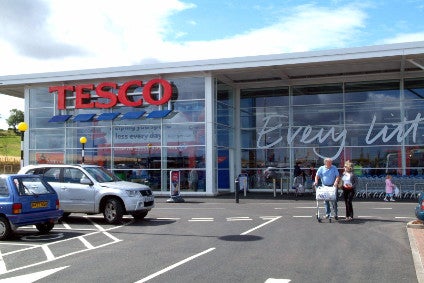
UK supermarket retailer Tesco says it is confident it has met the vast majority of its turnaround goals after posting a 28% jump in full-year profits.
Publishing its preliminary results today (10 April), Tesco says profit before tax soared 28.3% to GBP1.67bn (US$2.2bn), compared with earnings of GBP1.3bn a year earlier. Group operating profit before exceptional items, meanwhile, which gives a picture of the company’s underlying performance, was GBP2.21bn, up 33.5% at constant exchange rates and up 34% at actual rates.
Group sales climbed 11.3% to GBP56.9bn from GBP51bn in the prior year. In the UK and the Republic of Ireland, like-for-like sales grew by 2.9%.
The retailer adds its F&F clothing range continued to prove popular with customers throughout the year, with clothing like-for-like sales growing by 3% in the period. In February 2019 it launched selected F&F womenswear items on Next.co.uk.
CEO Dave Lewis notes that after four years, Tesco has met or is about to meet the vast majority of its turnaround goals. “I’m very confident that we will complete the journey in 2019/20. I’m delighted with the broad-based improvement across the business. We have restored our competitiveness for customers…and rebuilt a sustainable base of profitability.”
Clive Black, research analyst at Shore Capital, says Tesco has delivered FY2019 preliminary results that are ahead of the firm’s expectations.

US Tariffs are shifting - will you react or anticipate?
Don’t let policy changes catch you off guard. Stay proactive with real-time data and expert analysis.
By GlobalDataMeanwhile, Thomas Brereton, retail analyst at GlobalData, notes Tesco’s strong full-year announcement advocates the success of CEO Dave Lewis’s turnaround plan.
However, “with the turnaround targets all but achieved, Tesco now needs to set itself some new objectives,” he adds. “With the lack of clarity around Brexit, the short-term aim must be around fortifying supply chains to ensure no disruption in availability if a no-deal materialises. However, it must also widen its field of vision to generate longer-term benefits. In particular, it should be looking at the struggles of main rival Sainsbury’s, and try to leverage its difficulties to pickpocket customers that have become disillusioned and are looking for a change.”




